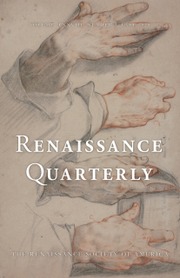This book, which is the eleventh volume of Monumenta Historica Societatis Iesu series, is a critical edition of the original manuscript Memoirs of Seventeen Boarders at the College of Nobles in Parma found at the Biblioteca Comunale Passerini-Landi in Piacenzi. The book itself is divided into two parts: an introduction, which includes the contextual history of the manuscript and a biography of its author, Orazio Smeraldi (1592–1672); and a transcription of the Memoirs in its original language of Italian, with a critical apparatus included.
Miriam Turrini’s eighty-page introduction takes the reader into an in-depth study of the text, its author, and its social milieu. In this part, Turrini makes clear the purpose of this text—namely, that it was written by Smeraldi to provide a hagiographical account of the saintly lives of seventeen young boarders who died at an early age (between nine and twenty-two years old) between 1621 and 1670. Initially intended to be circulated internally in manuscript form, the text served a clear didactic function: to commemorate and edify the saintly lives of these young boarders, and to provide future boarders at the college with examples of holy lives to emulate. Drawing from a range of sources, such as the author’s own memory, oral and written accounts, and printed texts, the Memoirs demonstrates Smeraldi’s belief that “example is essential in directing someone’s life” (11). While little is mentioned in Smeraldi’s text of the wider historical and political context in which the boarders were living, he does mention several historical events that provide the backdrop to the memorial: the Thirty Years’ War (1618–48), the War of the Mantuan Succession (1628–31), and the plagues that hit northeastern Italy between 1629 and 1633. Turrini contextualizes Smeraldi’s work in the wider genre of biographical or hagiographical accounts of other pious individuals, which were popular in early modern Jesuit historiography for the purpose of creating worthy examples to emulate for holy lives.
The text itself is comprised of brief accounts of each of the seventeen boarders, which include information on their family backgrounds, their time of contact with the college, accounts of their holy lives and deaths, and a memorial of their exemplary lives. As Turrini mentions in her introduction, these accounts provide an insight into the noble families in Parma and their relationship with the Jesuit community. This part of the text also provides a unique insight into the intimate life of the college and promotes the value of Jesuit education.
Memoirs of Seventeen Boarders at the College of Nobles in Parma makes available in print for the first time a unique source text that provides insight into the early years of the Jesuit education and boarding system. Though more microhistorical in its focus, this text is nonetheless an important witness to the social and cultural milieu of the time and particularly to the network of communities and families who worked closely with the first Jesuits in Northern Italy. It is a valuable text for historians with an interest in the history of education, as well as those with an interest in the early years of Jesuit education in Italy and Europe.



